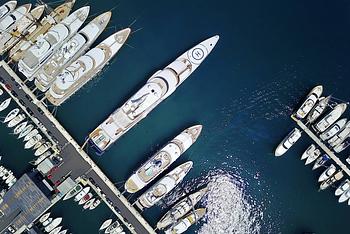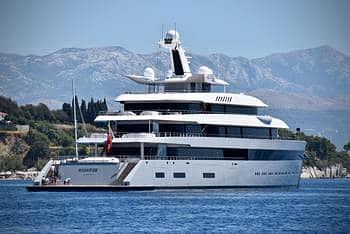Electric boats are here and they’re here to stay. Like the automotive industry, the boom in the electric boat market has taken the boating world by storm and is clearly a path into the boating’s future. The need to protect our oceans, coral reefs, fish, wildlife, aquatic plants, migration zones, and drinking water from boat pollution is imperative. Across the world, national and local authorities are creating more and more zones where gas- and diesel-powered vessels are prohibited. From the small fishing lakes that dot the United States, to wildlife refuges, marine sanctuaries, reservoirs, and lakes, which are important migratory stops for wildlife, we can already identify many unique boating destinations where only electric boats are welcome.
Electric Boats are the Way of the Future
The benefits of choosing an electric boat over a gas- or diesel-powered one are numerous. The single most important benefit is that they produce zero emissions, meaning that water pollution by the powerplant is eradicated. According to the US Department of Ecology, records show since 2015 recreational vessels have spilled nearly 15,000 gallons of fuel. And that figure is likely much higher, as most spills aren’t reported.
The concept of electric boats isn’t anything new, and there are already tens of thousands of them across the United States and the rest of the world. But until the past few years, they were almost wholly used for fishing, with small trolling motors allowing for shallow water fishing. The idea of faster, more powerful electric boats is where things have changed, and today that’s exactly what you can find. With electric-boat charging points appearing at a fast rate, the tide is turning and there are more and more places where you can cruise safely in the knowledge that your boat isn’t harming the beautiful landscape, its waters, and wildlife around you.
7 Unique Cruising Destinations for Electric Boats Only
-
The Königssee, Bavaria, Germany
In the heart of Bavaria, in Berchtesgadener Land, the crystalline Königssee is Germany’s highest, (1,978 feet), deepest, and cleanest lake, and its glass-like waters are famously drinkable, they’re so pure. It’s perhaps no surprise then that boats using gas or diesel fuel are prohibited, ensuring the preservation of this pristine region. Only electric-powered boats, rowing, and pedal boats are allowed on the water here and, unlike many regions on our list which are in the process of implementing these restrictions, the Königssee has been this way since 1909.
This alpine region is simply beautiful, with steep cliff walls rising out of the deep, clear waters. Days here can be spent exploring the abundant nature, visiting St Bartholomä and its pretty onion-domed chapel, or exploring the village of Salem. Once a summer escape for Bavarian royalty, today the Königssee is the shining example of how clean a lake can be when diesel motors have been prohibited for over a century.

-
Everglades, Florida
The great watery wilderness that is the Everglades spans a staggering 1.5 million acres. The shallow swampy waters are one of the United States’ most abundant wildlife regions with alligators, crocodiles, turtles, snakes, otters, and all manner of birds calling the mangroves home. Across the huge area are various boating zones, but electric boats will find they have access to even the most far-flung corners. Troll zones are designated in any area in Florida Bay that is less than two feet deep and combustion engines may not operate in those areas.
In fact, by cruising around this highly sensitive ecological zone in an electric boat, you’re helping to preserve the delicate ecosystems. The Everglades are North America's biggest protected sub-tropical wilderness reserve, and you can spend days cruising the endless waterways on wildlife safaris, camping and/or enjoying outstanding fishing opportunities.

-
Amsterdam canals, Netherlands
Come 2025, Amsterdam’s famous canals will be open only to electric-powered boats. Indeed the entire city will allow access only to zero-emission vehicles in its ambitious and forward-thinking approach to climate control. On the maze of canals, lined by narrow, gabled buildings and cobbled roads, 2-stroke engines have been banned since 2017 as the city moves ever closer to its green goals.
Visiting Amsterdam on an electric boat allows for some of Europe’s most enchanting sightseeing. Slip quietly along the waterways past treasure-filled museums, shops selling all manner of curiosities, and a booming café and restaurant scene. With a perfect mix of centuries-old architecture and profound historical sites combined with an edgy design and art scene, Amsterdam is the perfect destination for enjoying modern electric-boat technology along historic canals.

-
Salagou Lake, France
In the Hérault region of France, Salagou Lake stands as the largest body of water measuring some 4 miles long and 147 feet deep. Vital to the region for irrigation and drinking water, the great reservoir is highly protected, and only paddled, wind-driven, or electrically powered boats are allowed on its waters. Come the summer months, boaters and watersports enthusiasts flock here to enjoy the clear, calm waters surrounded by mesmerizing red hills—created by the iron oxide in its soils.
The region is striking in its beauty, and one of the great emblematic landscapes of France. Designated a Grand Site, the man-made lake and its unusual geology make for a perfect electric boating destination. From its two nautical bases, the Bay of Vailhes in the north and Clermont l'Hérault farther south, you’ll discover excellent facilities for electric boats and fishing, as well as plenty of quaint accommodation options and on-land activities.

Norway’s great fjords are among the world’s outstanding boating destinations. From lofty heights, cliffs plummet into navy blue waters teeming with whales and dolphins, seals and salmon. However, with the rising popularity of Norwegian fjord cruises, the Norwegian Maritime Authority has taken steps to reduce the emissions in this highly protected UNESCO World Heritage region, and from 2026 the Geirangerfjord and Nærøyfjord fjords in western Norway will be open only to electric vessels.
Imagine gliding soundlessly in an electric boat along the two great fjords, the crash of waterfalls and the shriek of hundreds of sea birds the only sounds that can be heard. In this fairytale landscape, adventure awaits. Cruise past tiny farms clinging impossibly to the cliff sides, head ashore and walk the Fosseråsa national hiking trail, or stand behind the Storsæter waterfall. The region is dedicated to sustainability, from its slow food scene to its family-run accommodation, and electric boats are an important next step in this mission.

-
Bassenthwaite Lake, Lake District, UK
Nestled in the British countryside, in the huge Lake District National Park, Bassenthwaite Lake is an important home for wildlife including hundreds of birds such as osprey as well as fish including Atlantic salmon, who come here to spawn. To ensure the survival of the wildlife, as well as to preserve the beauty of the region, petrol engines are not permitted on the lake. For the most part only paddled or sailing craft are allowed, but for those with 12-month permits, electric outboards are also permitted.
Boating on Bassenthwaite Lake allows for views of a quintessentially English landscape. Rolling green hills dotted with grazing sheep, the grand country manor of Mirehouse and its beautiful gardens, and the Dubwath Wetland Nature Reserve—the first wetland reserve in the Lake District—all stand on its shores.

-
Hundreds of Reservoirs and Lakes in United States
Designating some waters as suitable only for electric boats is a new trend as awareness of the negative effects that internal combustion engines have on wildlife, water quality, and aquatic plants increases. But across the United States, the idea of reducing speed limits and outright prohibiting the operation of gas and diesel engines on lakes is nothing new.
Across Georgia, North Carolina, Ohio, Virginia, Washington, Pennsylvania, and many more states, man-made reservoirs and fishing lakes have been open only to electric trolling motors for years. These lakes are often used for drinking water, and so it’s imperative to keep them clean. Yet as electric-powered boats get more advanced, with a whole new genre of fast electric boats on the market, we’ll likely see many more lakes limiting top speeds in addition to prohibiting internal combustion engines on boats.




